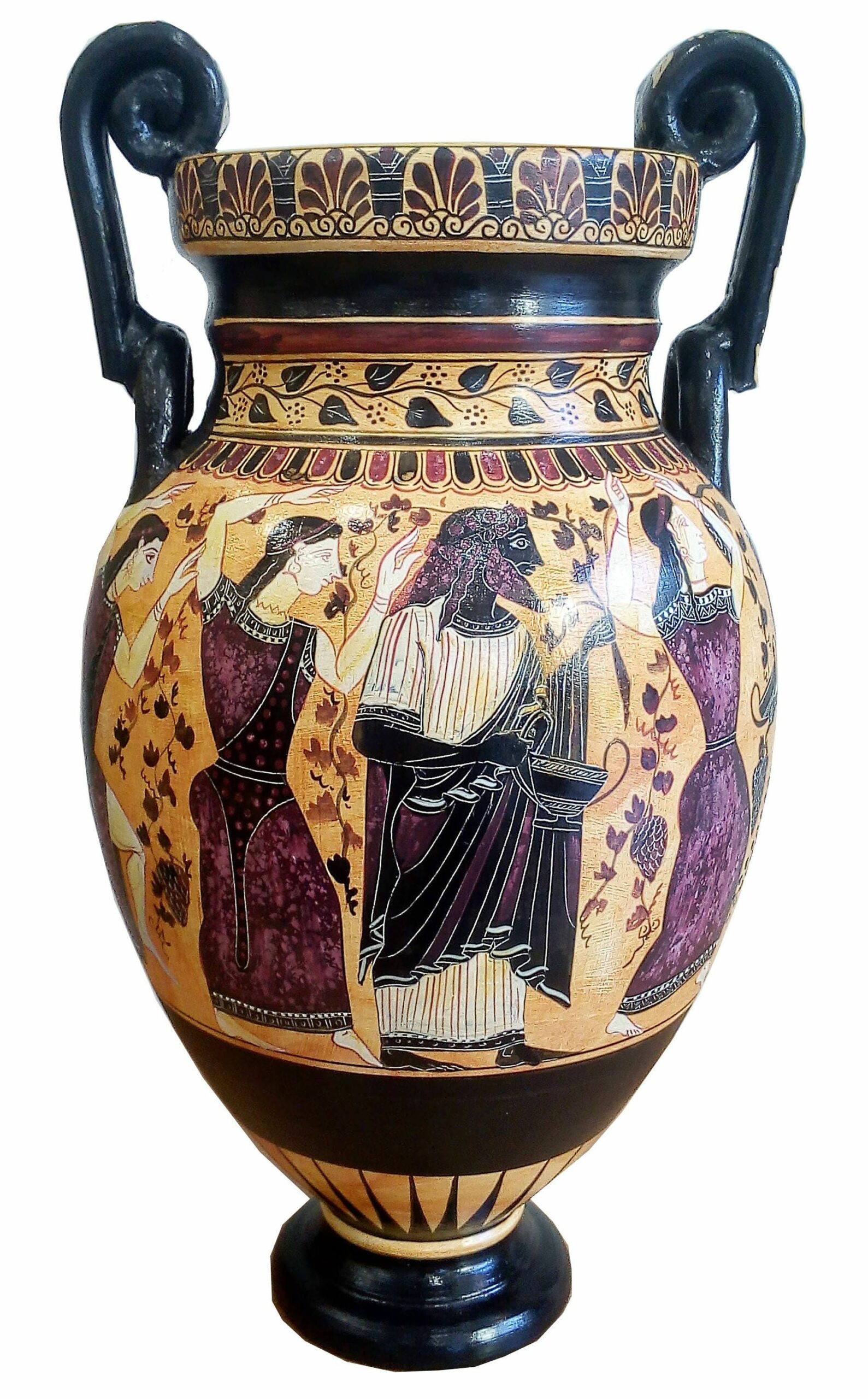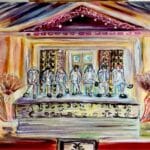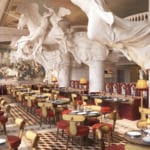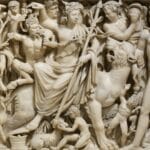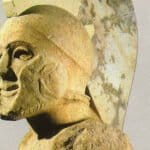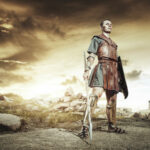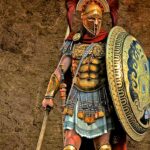From ancient Greek pottery depicting exuberant celebrations to Renaissance canvases overflowing with color and detail, the Feast of Dionysus has captivated artists for millennia. This article delves into the rich history of artistic representations of these legendary bacchanalian revelries, exploring the evolution of styles, techniques, and cultural interpretations across time. We’ll examine iconic masterpieces and lesser-known gems, uncovering the symbolism inherent in depictions of Dionysus, satyrs, and maenads, and how their representations have shifted throughout history. Prepare for a journey through time, from the earliest depictions to contemporary reinterpretations of this enduring artistic theme.
Decoding Dionysian Revelry: A Visual Feast Through History
For centuries, artists have been enthralled by Dionysus, the god of wine, theatre, and ecstatic release. Their interpretations of his feasts—often chaotic, exuberant celebrations—display remarkable diversity, mirroring evolving cultural perspectives and artistic styles. This journey through Dionysian art reveals not only artistic evolution but also shifting societal views of pleasure, excess, and the divine.
From Clay to Canvas: A Dionysian Timeline
Early Greek pottery, dating back centuries BCE, offers a glimpse into these bacchanalian festivities. Simple lines and vibrant colors depict scenes of energetic dancing and drinking, capturing the raw energy of the celebrations. Roman mosaics and sculptures, while often echoing Greek themes, introduced their own perspectives. The Renaissance witnessed a dramatic shift, with artists like Bellini harnessing oil paints to create detailed and realistic depictions of these feasts, adding depth and richness previously unseen. The Baroque era followed, embracing dramatic flair and movement, a stark contrast to the calmer Renaissance style. The stylistic choices of these diverse periods likely reflect changing cultural attitudes toward Dionysus and the nature of his revels.
Iconic Paintings: Masterpieces of the Vine
Two famous paintings epitomize the evolution of Dionysian feasts on canvas:
Giovanni Bellini’s “Feast of the Gods”: This High Renaissance masterpiece is a visual delight, employing vibrant colors and stunning detail to capture the atmosphere of this divine party. Bellini’s mastery of light and shadow creates a palpable sense of depth. [https://www.lolaapp.com/dionysus-feast-painting] Viewers may note the painting’s serene atmosphere, conveying a sense of harmonious indulgence. Located at the National Gallery of Art in Washington D.C.
Jan van Bijlert’s “Feast of the Gods”: Unlike Bellini’s serene work, van Bijlert’s Baroque rendition is characterized by dynamic movement and dramatic lighting. It presents a more chaotic and energetic scene. [https://www.lolaapp.com/dionysus-painting-feast] The exact location is currently unknown, likely residing in a private collection. The powerful contrast between these two artworks highlights the impact of artistic style and the changing societal interpretation of these themes.
| Artist | Title | Artistic Style | Approximate Date | Location | Defining Characteristics |
|---|---|---|---|---|---|
| Giovanni Bellini | Feast of the Gods | High Renaissance | 1514 | National Gallery of Art, Washington D.C. | Detailed, vibrant colors, peaceful atmosphere |
| Jan van Bijlert | Feast of the Gods | Baroque | 1615-1620 | Private Collection (Location Unknown) | Dynamic composition, dramatic lighting, sense of movement |
Beyond Bellini and Bijlert: A Wider View of Dionysian Art
Numerous other artists have depicted these revelries, employing various media and techniques. The choices in materials and methods likely influenced the final artwork’s impact and interpretation. Analysis of these pieces may reveal common themes across different eras and cultures, or showcase uniquely individual perspectives. Some experts believe that further research into the diverse representation of Dionysian scenes across different cultures will enrich our understanding of this theme.
Dionysus’ Unexpected Encore: The Paris Olympics and Contemporary Debate
Philippe Katerine’s performance at the Paris Olympics opening ceremony unexpectedly ignited a widespread debate on the use of classical imagery in modern society. This event brought the artistic traditions surrounding Dionysus back into the public eye. Katerine’s provocative work likely presented both a challenge and reflection on the traditional depictions of Dionysian revelry, sparking diverse opinions amongst the public and experts alike. This debate continues to evolve.
Modern Interpretations: Dionysus in the 21st Century
Contemporary artists continue to find inspiration in the theme of the Dionysian feast, employing modern materials and techniques, offering fresh perspectives that differ significantly from their predecessors. These reinterpretations suggest a continued fascination with the themes of celebration, excess, and the blurred line between the earthly and divine.
Unanswered Questions and Future Research
Much remains to be discovered about the artistic representations of Dionysian feasts. Exploring non-Western artistic traditions may reveal fresh perspectives, while interdisciplinary approaches combining art history and psychology could offer unique insights into our enduring fascination with intoxication and release. Further research promises to uncover new understandings of this persistently inspiring artistic theme. It is likely that future studies will yield new interpretations and deepen our comprehension of this rich artistic legacy.
Who Painted the Feast of Dionysus? Jan van Bijlert and “The Feast of the Gods”
While not strictly a depiction of a Dionysian feast, Jan van Bijlert’s “The Feast of the Gods” features Bacchus (the Roman equivalent of Dionysus) prominently, offering a powerful visual interpretation of Dionysian revelry. This Dutch Golden Age painter (c. 1597-1671), heavily influenced by Caravaggio, spent significant time in Rome, becoming part of the Utrecht Caravaggisti group. His masterful use of chiaroscuro (the dramatic interplay of light and shadow) makes his paintings incredibly dynamic and captivating.
“The Feast of the Gods,” housed at the Musée Magnin in Dijon, France, depicts the wedding of Thetis and Peleus, but Bacchus stands front and center amidst a boisterous celebration. This vibrant artwork, painted sometime between 1635 and 1640, visually captures the lively energy of a Dionysian-style celebration. Bijlert’s skill in employing chiaroscuro draws the viewer’s eye to specific details, adding to the painting’s captivating quality.
The painting unexpectedly gained international attention due to the Paris 2024 Olympics opening ceremony, which incorporated visual elements strongly resembling its composition and theme. This led to a global online discussion, with opinions varying from enthusiastic praise to accusations of artistic appropriation. The Musée Magnin itself acknowledged the similarities, further fueling the debate. This controversy underscores the enduring relevance and capacity of art to provoke widespread discussion.
However, the painting’s significance extends beyond its recent online fame. Its artistic excellence is undeniable, providing a prime example of Baroque art. The prominent presence of Bacchus suggests deep symbolic meaning; further research into the painting’s commission and conservation history may reveal further insights into its original intent and interpretation.
Key Points to Remember:
- Jan van Bijlert’s “The Feast of the Gods,” while not a direct Dionysian feast, provides a compelling visual representation of Dionysian revelry through its prominent portrayal of Bacchus.
- The painting is a remarkable example of Dutch Baroque art, utilizing the dramatic technique of chiaroscuro to create a vibrant and immersive scene.
- The painting’s striking resemblance to elements of the Paris 2024 Olympics opening ceremony propelled it to international attention, sparking extensive discussions and debates.
- Ongoing research into the painting’s commissioning, symbolism, and conservation history promises to unveil further insights into its deeper meaning and significance.
The Paris Olympics Controversy: A Reinterpretation of Classical Imagery
The 2024 Paris Olympics opening ceremony sparked a significant controversy with its performance piece, initially criticized online as a disrespectful imitation of Leonardo da Vinci’s Last Supper. However, the true inspiration turned out to be Jan van Bijlert’s The Feast of the Gods, shifting the focus from outright religious offense to questions of artistic homage and appropriation. This unexpected twist transformed the discussion, highlighting the multifaceted nature of cultural interpretation.
The tableau featured a vibrant mix of performers in extravagant costumes, creating a spectacle that immediately caught global attention. However, the initial reaction was swift and largely negative, with many viewers expressing outrage at what they perceived as a blatant and disrespectful mockery of The Last Supper. This initial response was quickly amplified through social media channels, transforming a single performance into a major international news story.
However, art experts clarified the piece’s genuine inspiration: Jan van Bijlert’s 17th-century Feast of the Gods. The Musée Magnin confirmed this, releasing a statement that helped shift the public discourse. The visual similarities between the two works became apparent, with side-by-side comparisons surfacing widely on social media. This revelation significantly altered the trajectory of public opinion, shifting the focus from accusations of sacrilege to discussion around artistic license, cultural appropriation, and the representation of diverse identities.
The debate continued even after the source was revealed, encompassing artistic freedom, the borrowing of cultural elements, and the challenges of representing identity in the 21st century. The LGBTQ+ performers added an additional layer to this complex discussion. Social media played a pivotal role in both the initial outrage and subsequent clarification, showcasing both the power and pitfalls of rapid information dissemination.
Key Takeaways:
- The Paris 2024 Olympics opening ceremony’s performance piece, initially condemned for resembling The Last Supper, was actually inspired by Jan van Bijlert’s The Feast of the Gods.
- The quick spread of criticism via social media demonstrates how readily artistic creations can be misinterpreted.
- The controversy ignited discussions about artistic freedom, the appropriation of cultural elements, and the representation of diverse identities.
- Art historians played a pivotal role in revealing the piece’s true inspiration, fundamentally shifting the course of the debate.
- This incident underscores the multiple ways in which art can be understood and interpreted, and the continuous evolution of artistic expression.
The debate continues to evolve, raising important questions about artistic expression and cultural sensitivity in a modern interconnected world. Further investigation into the artists’ intentions, audience reception, and the impact of social media will enrich our understanding of this multifaceted event.
The Enduring Controversy of Leonardo da Vinci’s Last Supper
Leonardo da Vinci’s Last Supper is not merely a famous painting; it’s a source of ongoing debate and reinterpretation. Completed around 1498, it depicts the pivotal moment when Jesus reveals that one of his disciples will betray him. However, the controversy stems not from the biblical narrative itself, but from the myriad interpretations elicited by Da Vinci’s masterful execution.
The artist’s choices – the apostles’ facial expressions, their body language, and the play of light – all contribute to a rich tapestry of potential meanings, setting the stage for centuries of scholarly discussion. Some experts suggest Da Vinci employed hidden symbols or codes, hinting at deeper meanings beyond the explicit religious narrative. Others counter that the painting’s power lies solely in its masterful storytelling and technical brilliance. This lack of definitive consensus forms the core of the ongoing controversy.
For centuries, scholars have meticulously analyzed every detail, proposing interpretations ranging from alchemical references to hidden political statements. These varied approaches highlight the painting’s complexity and its capacity to transcend its initial context.
The recent comparison with Dionysian feasts, particularly during the Paris Olympics, added another layer to this debate. While there is a shared visual structure—a long table, interacting figures—the cultural contexts are vastly different. While The Last Supper is deeply religious, Dionysian celebrations were pagan rituals centered on wine, revelry, and ecstatic experiences. The comparison raises the intriguing question of whether Da Vinci was somehow influenced by such imagery or if the similarity is indeed just coincidental.
The 2024 Paris Olympics opening ceremony further fueled this debate, sparking a surge of opinions and discussions on artistic intent and the public perception of religious imagery. The organizers released a statement apologizing for any offense caused by the tableau, emphasizing that no deliberate disrespect was intended.
The ongoing challenge of preserving this fragile masterpiece introduces another crucial element. Restoration efforts and new technological analyses, such as using infrared light to explore under-paintings, continue to generate new interpretations and sustain the debate around its meaning.
Key Takeaways:
| Point | Explanation |
|---|---|
| Multiple Interpretations | The Last Supper‘s meaning is open to many different, sometimes opposing, ideas, resulting in continued scholarly debate. |
| Comparisons to other art | Comparing it to artistic traditions, like Dionysian feasts, fuels ongoing discussions and interpretations. |
| Modern Relevance | The Paris Olympics controversy demonstrated that Da Vinci’s painting remains remarkably influential and continues to spark significant public conversations. |
| Ongoing Research | New technologies and restoration efforts continually reshape our understanding, generating new layers of interpretation and further debate! |
Leonardo da Vinci’s Last Supper remains a work in perpetual progress, both physically and intellectually, captivating audiences and encouraging insightful discussions around art, faith, and our evolving interpretations of the past. Its enduring appeal continues to provoke thought and inspire new perspectives centuries later.
- Unlock Filipino Culture: A Deep Dive into Traditions and Practices - April 23, 2025
- Unlock Spanish Culture: Insights & Opportunities Now - April 23, 2025
- White Spirit Uses & Substitutes: A Deep Dive for Pros & DIYers - April 23, 2025
